
Dispersion, refers to an optical property of gemstones whereby flashes and pinpoints of spectral colors are displayed as the stone is turned in the light. The dispersive colors we see are not really there in the gem, instead, they are created by the behavior of white light in the stone. Dispersion results when light passes through a transparent material with inclined surfaces (like a prism, or a faceted gemstone). Although the term "fire" is gemologically equivalent to dispersion, "fire" is so frequently misused to mean either brilliance (total light return) or scintillation (twinkling), that I prefer to use "dispersion" in all my descriptions for the sake of clarity.

White light is, of course, made up of a spectrum of wavelengths from relatively long (red) to relatively short (blue and violet). Each of these wavelengths is bent to a different degree (red less, blue more) when passing from air into a denser medium like a gemstone. When the bent light waves exit through an inclined surface (like a facet), depending on the degree of bend (or refraction), they may show as distinct spectral colors. The ability of a gem species to show dispersion is, therefore, roughly correlated with the density and refractive index of the gem material itself.
This property is a distinctive characteristic of each gem species and can be used in the process of identifying a gem. Testing for dispersion in gems, however, is actually a rather painstaking and complicated process involving measuring the separate refractive indices of the red and blue wavelengths in that species and calculating their ratio. Instead, most gemologists and gem lovers simply gauge dispersion by eye.
There are published tables (see below) of the laboratory values for each species, but in actuality several other factors may enhance or depress the display in a given stone. Foremost among these is body color. For example, two species with high values for dispersion: demantoid garnet and Benitoite tend to have fairly dark body color which usually masks the effect to a great degree. Fans of dispersion and fans of rich color often part company over which is more beautiful--> a saturated medium dark blue Benitoite which shows little of its potential dispersion, or a substantially lighter one with spectral colors flashing at every turn. (As a card carrying Benitoite fancier, I am definitely in the latter category!) The 2.0 ct. Benitoite stone in this pendant has, to my eye, an optimal balance between color and dispersion.
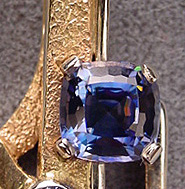
The two sphalerites below show the effect of darker body color on dispersion, the yellow stone showing much more than the darker orange stone.
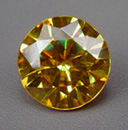
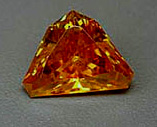
In general, the larger, cleaner and lighter in color the gem, the more of its potential dispersion will be visible. Cutting style has a noticeable effect as well, in that higher crowns accentuate the effect and flatter crowns diminish it. (I once cut a large, light lavender spinel (a species with modest dispersion figures) with an extremely tall crown that had more "fire" than a lot of poorly cut diamonds I have seen.
Diamonds have always been admired for this property, and so diamond simulants have been sought that have similar dispersive characteristics. Up until a few decades ago, the diamond simulant of choice was white zircon, whose dispersion and high luster make it a good visual replica for diamond.
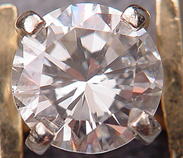
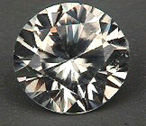
Synthetic rutile and strontium titanite were each briefly popular when first synthesized, but were noticeably more dispersive than diamond and so, not very convincing.
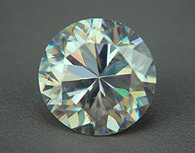
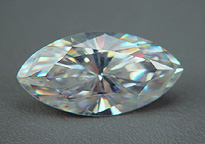
YAG (yttrium aluminum garnet), was also used, but with dispersion noticeably less than diamond, it was unsatisfactory as well.
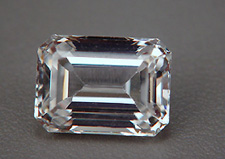
Cubic zirconia now has the lion's share of the simulant market, among other reasons, because its dispersion, though higher than diamond is close enough to look right, especially in sizes most commonly used in jewelry.
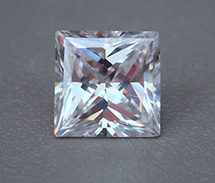
Low
- Fluorite: .007
- Silica Glass: .010
- Quartz: .013
- Apatite: .013
- Beryl: .014
- Chrysoberyl: .015
- Crown Glass .016
Moderate
- Iolite: .017
- Danburite: .017
- Tourmaline: .017
- Kunzite: .017
- Corundum: .018
- Spinel: .020
- Peridot: .020
- Spessartite Garnet: .027
- YAG: .028
High
- Zircon: .038
- Lead or Flint Glass: .041
- Diamond: .044
- Benitoite: .044
- Sphene: .051
- Demantoid Garnet: .057
- Cubic Zirconia: .066
Very High
- Sphalerite: .156
- Strontium Titanite: .190
- Natural and Synthetic Rutile: .280